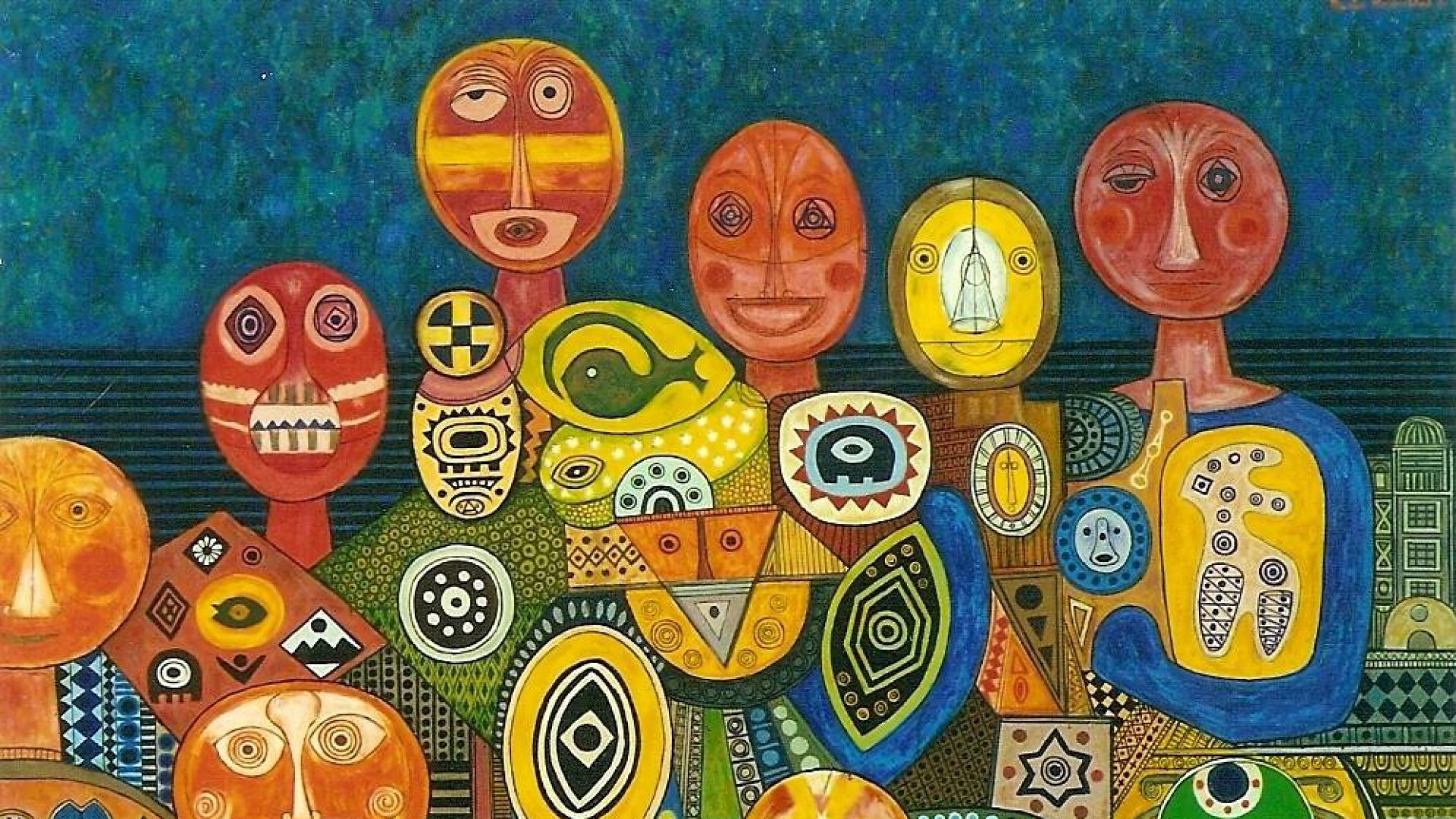
by Elaine Vilorio
03/11/2013 09:49 am ET | Updated May 11, 2013
There’s a disgusting dichotomy in Latin American culture. I see the models, the TV personalities, the actresses on Telemundo, Univision, etc. showing off their curves, the ones in all the right places, the mid-section not included. They don’t look too thin. Their bodies are like guitars — pictures of top-notch feminine health. They look taut. They are at equilibrium. I see my mother and her sisters and her friends forcing themselves into fajas to look the way those models and TV personalities and actresses do. They try to meet an up-held body image. They criticize celebrities or their own when there is any deviation. Then, they turn around and praise hearty appetites and accept their varying structural proportions. And they go on to advocate something they don’t practice.
When I was 10-years-old, I decided to do something about my body. I had always been a chubby girl, una niña gordita. The latter connotes a healthy plumpness, and that’s really what it was. Yet, that’s not what I saw at the time. I only saw my cousins sprouting bigger breasts and flatter bellies; it seemed like the reverse for me. I would go to the bathroom and lift up my shirt and cry for a bit. I stopped eating lunch at school. My mother would criticize me. I was becoming una aguja; people would think she didn’t cook for me at home. That’s the biggest insult to the traditional Hispanic woman: a jab at the quality and quantity of her cooking. But didn’t she see? I was just trying to reach that state of perfection. In using fajas, wasn’t that what she and countless other women were doing? In comparison, I viewed my action as far nobler. I wanted to become the mold — these women just wanted to look like it. I later learned they never strived for the body because striving was viewed as vain. You just had to have it, or pretend to. But I was failing. I didn’t gain the bosom or the butt, just the flat stomach. Even more, I gained flat arms, flat legs, flat everything. It’s either the whole package or none of it. It would have been different if I had slimmed down and gained more defined curves, but that’s not what happened. Knowing the curves wouldn’t come, my mother preferred overall plumpness. This episode passed. I started eating lunch again.
When I was 14-years-old, I joined indoor track and field, earning a varsity letter at the end of my season. My parents were horrified. To be considered physically wholesome, I had only two options. I could be that famed guitar figure, or that rosy-cheeked niña gordita. I had chosen a third option, one not accepted my family or its associates. I developed an athlete’s body, angular and wiry like a colt. I developed an athlete’s appetite; eating three plates of arroz con guandules wasn’t a challenge. My body felt energized; running put me at peace; it made all of the fuss over my body insignificant. I was forced to quit competitive running, a sport I loved with all of my heart and all of my soul. My family and their cultural perception of health blocked all opinions. They were convinced my body wasn’t a healthy one because it didn’t fit their standards. My pediatrician confirmed a spectacular physical condition, one above most girls my age. I wasn’t the overweight, inactive coach potato of my generation. I wasn’t the girl who skipped meals. I was optimally healthy. But even the validation of a professional proved without effect. I had my coach write a letter on my behalf. I researched the benefits of running and presented reports. I did everything I could to re-join the only sport I was ever passionate about. But if I continued to run, I would fall short of the body images accepted by my culture. This was unacceptable. An ocean of tears and resentment later, I settled for running on my own. Even this was cut short, pronounced no more different than its competitive counterpart.
I am 17-years-old. Last summer, the feelings of my 10-year-old self resurrected. I decided that I had had enough with my body. Keeping in mind that test run in fifth grade, I knew I would never acquire the sensuous curves priced by so many Latin American women. I only knew I had the power to settle for the first portion of that most applauded criteria: being skinny. My parents wouldn’t like this. Remember, if you will, the only accepted options my body had. I didn’t care. I stopped eating lunch again, but this time, I performed with more sophistication. I cut out all snacks; I ended up just eating two meals a day, small ones at that. I lifted up my shirt in the bathroom and I didn’t cry; I smiled; there was my flat stomach. The control of food intake became one of my priorities, one of the first things I thought about when I got up in the morning and when I lay down to sleep at night. I was eating just enough to get by, just enough to not pass out. Sometimes, I would binge eat and punish myself the next day by barely eating anything. Once school started in September, I had to face my friends, who consistently asked me why I didn’t eat lunch. My mother has the habit of having dinner on the stove by 2:30 pm; she gets home at too late a time to cook, and so, gets up early to do so. She prefers that my brother and I eat dinner early; I used that preference as an excuse, as an answer to my friends’ inquiries (“I eat dinner so early that there’s no point in me eating lunch”). One day, I stood up in the middle of my bedroom and started to sob. I hadn’t gotten my period in months. It hit me that I was disrespecting my body and myself. I didn’t deserve that. I needed to stop.
I’ve felt like the white rag on a tug-of-war rope. My body will never fit the spicy image of a Hispanic Amazon; it will never be naturally slim and naturally curvaceous. It will never be plump again, a testament to my mother’s cooking; adolescence has left a body structure that rejects that childhood portliness. It will no longer be an idea my culture or my family imposes on me, much as the latter loves me. It will just be. It is my body. And I’m glad.
Source: Who Owns My Body?
